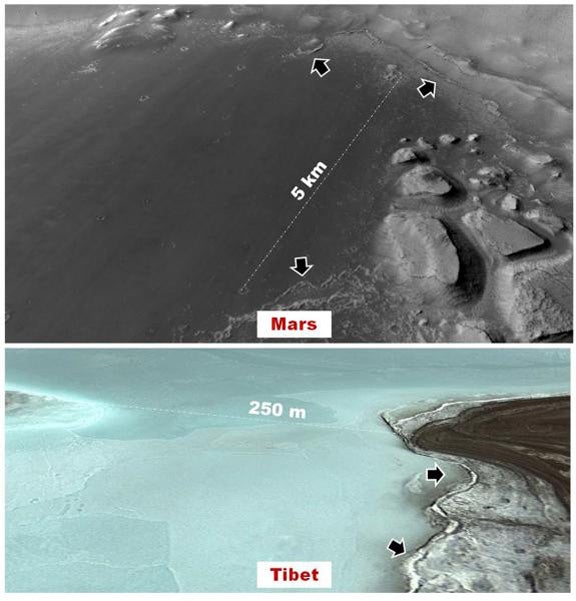These basins could have been episodically covered, perhaps during hundreds of millions of years, by lava and water lakes that were discharged from subsurface pressurized sources, Rodriguez wrote.
This shows an area on Mars that could possibly have harbored life.
“The temperature ranges, presence of liquid water, and nutrient availability, which characterize known habitable environments on Earth, have higher chances of forming on Mars in areas of long-lived water and volcanic processes,” Rodriguez said. “Existing salt deposits and sedimentary structures of possible emplacement within martian paleo-lakes are of particular astrobiological importance when looking for past habitable areas on Mars. This is particularly true if the discharge of early Mars groundwater, perhaps likened to hydrothermal systems that were active for billions of years, contributed to the formation of the paleo-lakes, as it is proposed in this investigation.”
The detection of paleo-lake sites on Mars is particularly challenging because under the planet’s frigidly cold and thin atmosphere their ponded water would have behaved differently than on Earth, he said. “In this research, we propose a Tibetan region where high mountain lakes show unique sets of landforms that might explain some basin interior features in the studied region of Mars.”
In collaboration with the Chinese government, Rodriquez will visit the Tibetan region this coming summer to investigate their in-situ potential as astrobiological analog sites.










